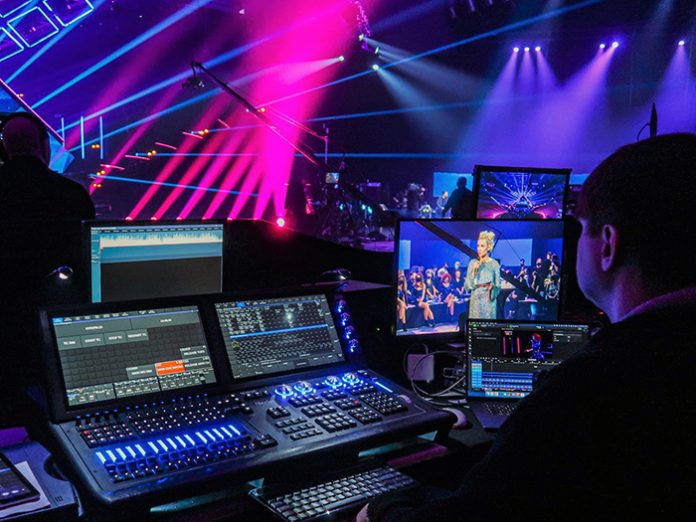Out of chaos and confusion, creativity often emerges. In the process, it leads to bold solutions that flourish far beyond the moment. Such was the case last year, when René Jõhve and his team at CuuClub set out to design the stage for Estonia’s Eurovision 2021 preselection program.
“We had a design ready, but there was a great deal of uncertainty in the air, because no one was clear about what would happen with the pandemic,” recalled Jõhve. “New issues kept emerging during our planning process. At one point, there was the possibility that the preselection semifinals would have to fit into a TV studio with the finals being moved to an arena. So, we had to change our plans last minute to create a design that would work in both settings.”
Accounting for all of these issues, Jõhve moulded his ideas into an adaptable, all-encompassing stage design that created an array of unique looks for artists competing in this year’s Estonian National Eurovision Preselection, which was held in March at Tallin’s Saku Suurhall arena.
With its multiple layers of angled floor-mounted LED video panels, massive triangular backdrop, and floating strips interspliced with brilliant aerial beams, his design projected an aura of majesty and expectation, providing an ideal setting for a contest highlighting aspiring talent.
Powering his massive 47-universe lightshow were three ChamSys consoles: one MagicQ MQ500M, which Jõhve used to run moving effects and blinders; and two MagicQ MQ 500 desks run by Erki Kukk, who took care of the key lights, and Črt Birsa for LED strips and special FX programming.
Looking back at the design after the event, Jõhve described the creative process behind it. “Having the LED screens at the sides of the floor was my original idea. I wanted it to give some additional shape to the stage and to have visuals supporting the acts from more camera angles,” he explained. “I really wanted to keep that idea. So, I started rearranging the set design around these screens. The LED arc shape came first and the triangular background later just by trial and error. Finally, I was happy with it – all things considered.”
From the beginning of the design process for this year’s event, Jõhve realised that the triangular configuration of this set would present some challenges. However, he felt that the aesthetic payback would make it well-worth the effort.
“I knew that the LED arch and also the triangular lighting configuration would limit how we could fan the lights, but I was confident that we could still pull off a wide range of different looks to reflect the unique character of each artist,” he said. “Because we wanted to support the acts, we tried to give more focus to the artist, or at other times just to have a smaller feel of room for intimate songs.”
The triangular shape of Jõhve’s design endowed the entire set with a distinct visual quality, regardless of which type of look he created. Although there was some programming, the CuuClub team did most of their timecoding during and after rehearsals. This meant long nights and little sleep during the event.
Thankfully, notes Jõhve, the ChamSys consoles made their task easier. “We like the MQ500 and MQ500M because they are fast with user-friendly screens and a lot of faders,” he said. “A really useful feature is the timecode timeline. After importing audio tracks, it was really fast and easy to get the cues and timings right.
“Of course, from my point of view the motorised faders on MQ500M made everything much clearer and easier to follow,” continued Jõhve. “For this show, the Automation and Cue Stack macros are essential. I’m very glad we get more and more new options for Cue Stack macros with the MQ500M.”
Relying on their three consoles, Jõhve and his colleagues ran their 281 fixtures, plus LED strips with precise control using 38 pages of playbacks, one for each artist. In the end they created a show that was breathtaking in its scope, representing some of the best aspiring singers in their country as well as the power of creativity to overcome any setback.






